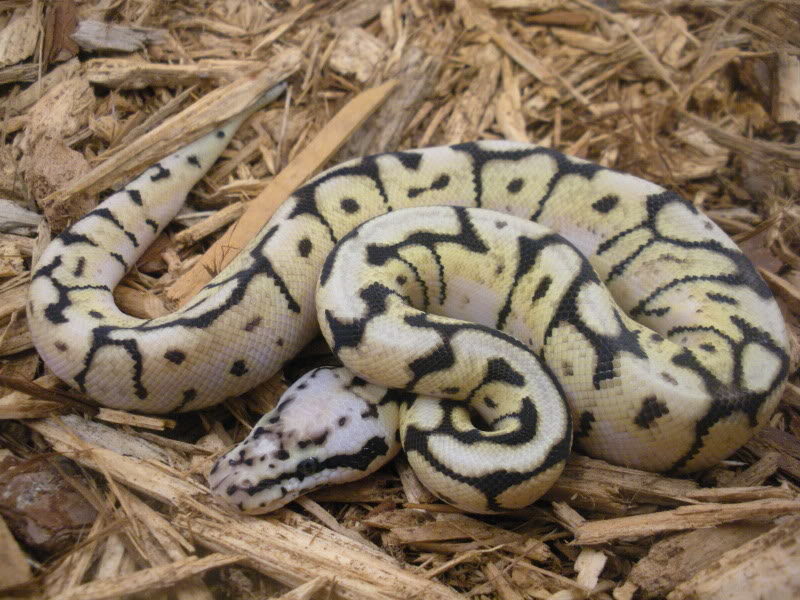
Introduction
Ball pythons, also known as royal pythons, are popular pet reptiles known for their beautiful patterns and docile nature. As responsible keepers, it is essential to understand and address any shedding issues that may arise.
Shedding problems often occur due to improper husbandry practices, particularly when the humidity levels in the enclosure are too low.
In this guide, we will explore the common causes of shedding issues and provide practical solutions to help you maintain optimal humidity levels for your ball python’s shedding process.
Importance of Humidity in Shedding
Successful shedding is crucial for the health and well-being of ball pythons.
During the shedding process, a snake’s old skin is replaced with a new one to accommodate its growth. In the wild, ball pythons seek out humid micro environments to aid in shedding.
As captive keepers, it is our responsibility to recreate these conditions in their enclosure.
Maintaining adequate humidity levels, ideally around 60-75%, is vital to ensure a smooth shedding process. Insufficient humidity can lead to retained shed, causing discomfort and potential health issues for your ball python.
Let’s delve into the common causes of shedding problems and how to address them effectively.
Common Causes of Shedding Issues
1. Substrate Selection
The choice of substrate plays a significant role in maintaining humidity levels within the enclosure.
While substrates like newspaper and aspen may be popular choices, they may not provide sufficient moisture retention for successful shedding.Consider using cypress mulch as an alternative, as it has excellent humidity retention properties.
2. Ventilation Imbalance
Excessive ventilation in the enclosure can lead to low humidity levels, hindering the shedding process.
If you keep your ball python in a glass aquarium with a screen top, chances are there is too much ventilation.
To address this issue, cover three-quarters of the screen top with a thin piece of plastic to reduce airflow.
Additionally, regular misting of the enclosure will help increase humidity levels.
3. Inadequate Water Source
A common oversight is not providing enough fresh water in the ball python’s enclosure.
Ensure the water dish is always filled with clean water, as ball pythons rely on this water source to aid in the shedding process.
Neglecting to refill the water dish can result in low humidity, leading to shedding difficulties.
4. Size of Water Dish
The size of the water dish can also impact humidity levels within the enclosure.
While it is not recommended to have a water dish large enough for your snake to submerge in, a larger dish can help maintain optimal humidity.
Consider using a 4-6 inch crock for adult ball pythons and smaller dishes for younger snakes.
Resolving Shedding Issues
If your ball python experiences a problematic shed, there are several steps you can take to assist the shedding process:
1. Warm Water Soak
One effective method is to provide a warm water soak for your ball python.
Prepare a secure container, such as a 10-gallon bucket with a lid, and fill it with approximately 1/2 inch of warm water.
Soak your snake overnight in the container, ensuring the water level is safe and the temperature is appropriate.This soak helps loosen any remaining shed and hydrates the skin.
Note: It is crucial to avoid using excessive water, as it can be dangerous for the snake and potentially lead to drowning. Additionally, ensure the soak container is in a suitable location, free from harsh cold temperatures that could harm your snake.
2. Damp Pillowcase Method
If your ball python still has pieces of stuck shed after the warm water soak, you can try the damp pillowcase method.
Place your snake inside a damp pillowcase for a couple of hours, allowing it to crawl around and rub against the damp fabric.
This action helps remove any remaining stuck shed and promotes a successful shedding process.
Preventative Measures for Healthy Shedding
To ensure your ball python consistently maintains healthy shedding, consider implementing the following preventative measures:
1. Proper Humidity Monitoring
Regularly monitor the humidity levels in your ball python’s enclosure using a hygrometer. Aim for a humidity range of 60-75%, ensuring it remains within this range throughout the shedding cycle.
Adjust the enclosure’s humidity as needed by misting or adding moisture-retaining substrates.
2. Shedding-Friendly Enclosures
Consider upgrading to a more suitable enclosure that better simulates the natural environment of ball pythons.
Snake racks with escape-proof plastic tubs provide excellent humidity retention and create a more comfortable habitat for your pet.
These enclosures offer a long-term solution to shedding issues and promote overall well-being.
3. Regular Maintenance and Observation
Maintain a clean and hygienic enclosure for your ball python. Regularly clean the water dish, remove any shed skin, and monitor your snake’s shedding cycles.
By observing your ball python’s behavior and physical condition, you can quickly identify any potential shedding problems and address them promptly.
Conclusion
Proper husbandry practices are essential for maintaining the health and well-being of your ball python, especially during the shedding process.
By understanding the causes of shedding issues and implementing the appropriate solutions, you can ensure a smooth and successful shedding experience for your beloved pet.
Remember to choose suitable substrates, balance ventilation, provide an adequate water source, and monitor humidity levels. In case of shedding difficulties, the warm water soak and damp pillowcase methods can help resolve stuck shed.
By following these guidelines and preventive measures, you will contribute to your ball python’s overall health and happiness.
For expert advice and information on ball python care, don’t hesitate to visit our Q&A Section. We regularly post our visitors’ inquiries and provide detailed answers. Feel free to explore and learn more!